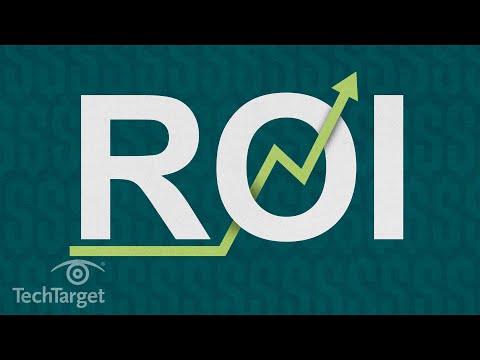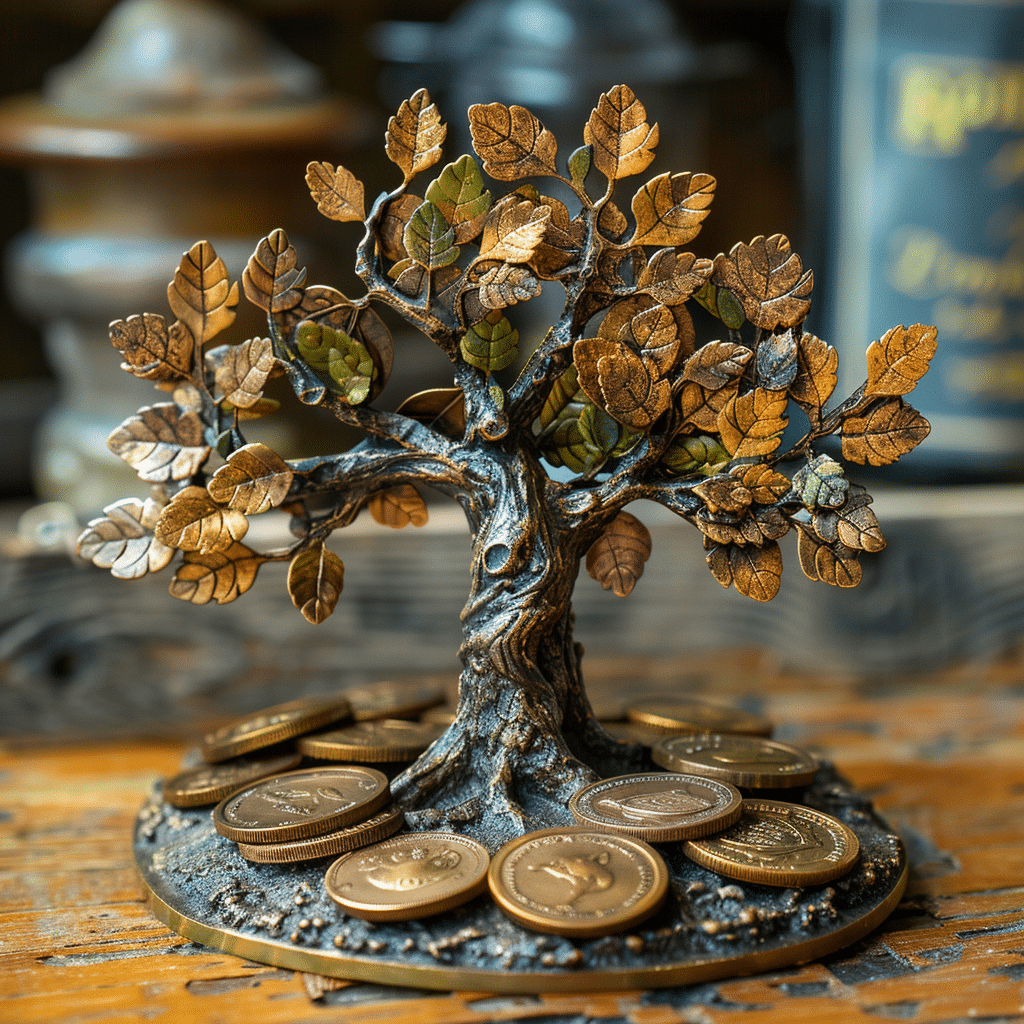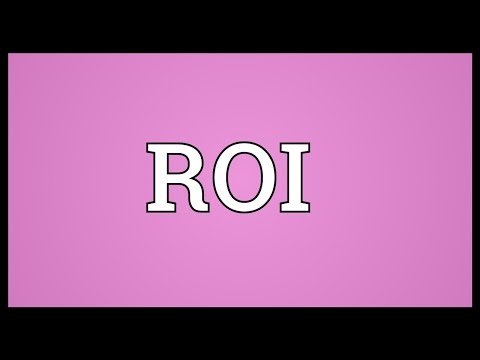Deciphering ROI Meaning in Today’s Investment Landscape
Return on Investment (ROI) is the financial compass that guides investors through the terrain of fiscal decision-making. In essence, ROI measures the profitability of an investment, showing us how much bang we’re getting for our buck. But why does it matter? Well, grasp your ROI, and you’re on your way to making decisions that could very well pad your wallet generously.
In the investing world of 2024, technology and market dynamics have pushed ROI from the back-office desk right to the forefront. With the rise of data analytics and a more globally connected economy, savvier investments are at your fingertips—if only you know how to interpret the data. It’s no longer just about counting pennies; it’s about understanding trends.

The Fundamentals of ROI and Its Impact on Financial Decisions
Time to talk numbers! The ROI formula is a simple yet powerful tool: (profit minus cost) / cost. Suppose you’ve invested $1,000 into a side hustle and it churns out $10,000. Your ROI? A whopping 90%. What a jackpot, right? But let’s not just spitball here. Consider Tesla’s audacious shove into electric vehicles. They poured billions into R&D and infrastructure, betting big on a greener future. Fast forward, they’re now reaping an ROI that’s not just profit but transformational influence in the auto industry.

| Category | Description | Example Calculation | Notes |
|---|---|---|---|
| Definition | ROI stands for Return on Investment. It measures monetary gain vs investment cost. | Often used to evaluate the efficiency of an investment or compare the efficiency of multiple investments. | |
| Formula | ROI = (Net Profit / Cost of Investment) * 100 | ROI = (($6,000 – $5,000) / $5,000) * 100 = 20% | Provides a percentage that represents the profitability or loss of an investment. |
| Application | Used by investors to assess profitability of investments like stocks, real estate, or businesses. | Helps in making informed decisions about where to allocate funds. | |
| Benchmarks | General ROI: 5-7% is reasonable; >10% is strong. Stocks: 7% after inflation is considered good. | Benchmarks vary by industry, investment type, and economic conditions. | |
| Context of Use | Can be applied to diverse investments from mutual funds to marketing campaigns. | More useful when comparing investments of similar types and risks. | |
| Time Frame | ROI can be measured over different periods depending on the investment term. | Long-term investments may have different ROI expectations than short-term ones. | |
| Limitations | Does not account for investment risk, time value of money, or investment duration. | A high ROI on a high-risk investment might not be as favorable as a lower ROI on a lower-risk investment. | |
| Calculation with Example | Return on a mutual fund scheme. | ROI = (Net Profit from mutual fund / Investment) * 100 | Selecting a mutual fund with a high historical ROI might indicate a potentially profitable investment. |
Analyzing High-ROI Ventures: What Separates the Best from the Rest
So, what separates the best from the rest in the quest for explosive ROI? A keen eye for innovation, market needs, and timeliness. Shopify saw a gold mine in expanding e-commerce solutions and leaped in head-first. The result? A marketplace revolution with staggering returns.

Sector-Specific ROI Insights: Where Are the Highest Returns?
Historically, stuffing your chips into tech and healthcare might have seemed like a wise move—and it frequently was. However, in 2024, the spotlight flicks to groovy contenders like green energy initiatives, which are sparking investor excitement. Meanwhile, AI startups are computing their way to stardom, promising ROIs that flirt with the stratosphere.

The 90% Profit Secrets: Strategies Employed by Top-Performing Companies
The secret sauce? High-ROI champs like Amazon employ strategies like diversification and customer obsession. They’re not just selling you everything under the sun; they’re selling it smarter, faster, and in ways that glue customers to their service. It’s no fluke—it’s strategic genius.

Mitigating Risks to Maximize ROI: A Guide for the Cautious Investor
Even the brave heart of ROI pursuit must beat wisely—risks wait at every turn. Wise investors cushion their ROI with risk management stratagems. They diversify, they hedge, and they always have an exit plan. It’s like the seasoned investor who diversifies their portfolio across different asset classes—balancing the potential high ROI investments with more stable ones to protect against market volatility.
Leveraging Technology for Enhanced ROI: Tools and Platforms
Remember those tech tools that turned Netflix into the colossus of content delivery? Advanced analytics platforms are reshaping how we predict ROI, disrupt markets, and satiate viewers’ cravings. In 2024, these tools are not just a neat addition; they’re absolutely integral to blasting ROI out of the park.
The Role of Innovation in Boosting ROI: Case Studies and Trends
Innovation and ROI are BFFs. Just ask SpaceX, which bet big on reusable rockets and is now laughing all the way to the moon—or Mars? With every launch, they’re redefining what’s possible while banking solid ROI. And peek into the crystal ball—innovation in sectors like biotech is already showing signs of lucrative ROI returns.
The Definitive Move: When to Reinvest Your ROI for Sustained Growth
Apple’s playbook showcases this beautifully. They didn’t just sit on their ROI from breakthrough products; they reinvested it into R&D for the next big thing. It’s about keeping the growth trajectory so sky-high it would give Everest an inferiority complex.
Mastering ROI in the Real Estate Market: A Deep Dive
Real estate can still be your golden goose for ROI, especially when savvy moves meet favorable market conditions. But when Is it a good time To sell a house? With an understanding of market factors and clever upgrades, investors in sustainable housing projects are witnessing a green ROI revolution.
Measuring Intangibles: ROI Beyond the Balance Sheet
Yet, ROI isn’t always money in the bank. Intangibles like brand value and customer devotion are elusive beasts to measure. Google, though? They’re crafting methods to tie innovation to ROI, advancing the art of evaluation.
The Investor’s Toolkit: Essential Resources for Accurate ROI Analysis
In the digital age, there’s an arsenal of resources at your fingertips, ready to sharpen ROI decision-making. Just as when you’re renting out Your house, these tools range from investment calculators to expert consultancy, each one adding clarity and precision to the ROI crafting process.
The Psychological Dimension of ROI: Investor Behaviors and Market Psychology
Market psychology and investor behavior have a tango-like relationship with ROI. It’s a subtle art, reading the room, and understanding when fear or greed drive decisions rather than cold, hard data. Beware the psychological traps that can skew ROI measures!
Global Markets and ROI: Understanding Cross-Border Investment Returns
Look at Coca-Cola—buzzing with activity in international markets, they’ve quenched their thirst for ROI by tapping into diverse demographics. Cross-border investing can yield juicy returns, but you’ve got to crunch the numbers and understand the local market rhythms.
Future-Proofing Your ROI: Adaptability in an Evolving Marketplace
If your ROI strategies are as rigid as a board, you’re in for a surprise. Adaptability is your golden ticket. Netflix’s smooth pivot from DVDs to streaming is proof that those willing to flip the script see the brightest ROI future.
Conclusion: The Path to Unlocking Exceptional Return on Investment
Securing a high ROI isn’t just a matter of luck; it’s a combination of astuteness, risk management, and relentless adaptation. The landscape of investment is ever-shifting, with new technologies and markets shaping the opportunities of tomorrow. The companies and individuals that stay ahead of the curve in understanding ROI—those who can decipher and harness its secrets—are the ones that will thrive. So keep learning, stay nimble, and let ROI be your guide to greater wealth.
Unlocking ROI meaning is akin to uncovering treasure in the vast ocean of investment. Just remember, you’re the captain of this ship, and with a sturdy understanding of ROI and an adaptable approach, you’ll navigate toward that coveted 90% profit—and perhaps, even beyond.
Demystifying ROI Meaning: Unveil 90% Profit Secrets
In the world of investments, understanding “roi meaning” is like finding the secret sauce that makes your financial burger sizzle. It’s a game-changer, folks! ROI, or Return on Investment, measures the gain or loss generated on an investment relative to the amount of money invested – pretty much the bread and butter for savvy investors trying to spice up their portfolio.
Let’s Break the Ice on ROI
Ever stumbled upon the trending What Is The ice hack For weight loss story? It’s all about that unexpected strategy that sheds pounds when conventional methods hit a plateau. Similarly, in the realm of investments, unlocking the roi meaning can be that ‘ice hack’, leading to a weighty wallet when your financial strategies need a refreshing twist. A hefty ROI is the weigh-in every investor is vying for!
Chatting Up Your ROI
Ever wanted to jazz up your investment strategies? Enter the digital age where Openai chat Gpt can be a game-changer. Think of this advanced AI as your smart investment buddy who helps you analyze and understand roi meaning without breaking a sweat. It’s always ready for a chat and doesn’t charge by the hour – now that’s an affordable advisor!
Is It Time for the Big Sale?
Speaking of investments, oftentimes folks wonder, Should i sell My house now? If we’re talking ROI, timing is everything. Just like knowing when to flip those juicy burgers on the grill to get that perfect sear, finding the right moment to sell property can seriously amplify your return. Timing isn’t just a tick on the clock; it’s a strategy that screams success!
The High-Proof ROI
Getting to grips with roi meaning is akin to understanding Everclear proof. You know, that potent spirit that can knock your socks off? Well, a solid ROI can have a similar intoxicating effect on your financial state – minus the hangover. And just like Everclear, you’ll want to handle it with care, so you don’t end up with a burnt investment.
Star-Studded ROI Strategies
You’ve seen patrick Fugit Movies And tv Shows, right? His career trajectory could be something akin to the ROI from some smart investment moves – starts off modest and then, boom, shoots to fame. The growth of your investment can have its very own Hollywood story, flourishing over time to collect applause and standing ovations from your bank account.
The Emotional ROI Rollercoaster
ROI isn’t just cold, hard numbers; it’s got an emotional beat, much like the morgan evans over For You Lyrics tug at your heartstrings. Sometimes, your investment’s performance can sing a ballad of ups and downs, highs and lows. But hey, who doesn’t love a good drama or love song? The key is to stay tuned in – because the final note might just be worth the journey.
Keep these little nuggets of fun facts and analogies in your mind, and the roi meaning will be less of a mystery and more of an exciting journey toward making your investments sing. So buckle up and enjoy the ride, because when you play your cards right, the ROI can be music to your ears – and your wallet!

What is ROI in simple terms?
What is ROI in simple terms?
Well, let’s break it down real simple-like: ROI, or Return on Investment, is just a fancy way of saying whether you’ve hit the jackpot or just broke even with the cash you’ve thrown into something. Think of it as the scorecard that shows if your investment’s done a home run or barely made it to first base.
How are ROI calculated?
How are ROI calculated?
Okay, so crunching those ROI numbers isn’t rocket science! Just grab the profits, subtract what you coughed up initially, and divide that by the original cost. It’s like measuring how much bang you got for your buck, or in math speak: (profit minus cost) / cost.
What does an ROI of 20% mean?
What does an ROI of 20% mean?
Aha! An ROI of 20% is pretty sweet—it means for every nickel and dime you put in, you’ve got an extra 20% back in your pocket. So it’s like throwing a party for your money where everyone’s invited, but your cash is the guest of honor that came out 20% cooler.
What is a good ROI?
What is a good ROI?
So you’re wondering what’s a good return on your investment? Well, if your ROI is strutting north of 10%, you’re dancing with the big dogs. Normally, getting a 5-7% ROI is decent, but over 10%, and you’re the belle of the ball!
Is ROI good or bad?
Is ROI good or bad?
Alright, here’s the scoop: ROI can be a pat on the back or a kick in the pants—it’s all about the context. Positive ROI? You’re on the gravy train with biscuit wheels. Negative ROI? Well, it’s like throwing a party and no one shows up. Not cool.
How do you calculate ROI for dummies?
How do you calculate ROI for dummies?
Don’t sweat it, calculating ROI is as easy as pie! Just take the moolah you made, subtract the dough you put in, and divide that by the initial investment. Some folks call it the net profit; I call it your “cha-ching” factor. And then, multiply it by 100 to get a percentage that’ll give you the full picture.
What is an example of ROI?
What is an example of ROI?
Imagine you bought some shares of your favorite sneaker company for $500 and later sold ’em for $600. Quick math: That’s a $100 profit! Calculate your ROI by subtracting the initial $500 from $600, divide by $500, and multiply by 100. Boom—you’ve got a solid ROI of 20%.
What is the difference between ROI and ROE?
What is the difference between ROI and ROE?
So ROI’s the big picture, the whole enchilada—it’s about the gain from any investment compared to its cost. But ROE? That’s more particular, just looking at the profit a company makes relative to its shareholders’ equity. ROE’s like asking how well the company’s using investors’ dough to rake in some green.
What is a good return on investment over 5 years?
What is a good return on investment over 5 years?
Lookin’ at the long game, a neat ROI over 5 years would probably have you grinning if it keeps up with or zips past the market average. Historically, a 7% after inflation’s been considered a thumbs-up, but hey, the higher the better—as long as you’re not riding the high-risk roller coaster.
Is 30% a good ROI?
Is 30% a good ROI?
Holy smokes, 30% ROI? If that’s not good, I don’t know what is! That’s like your investment hitting a home run – and then some. Just don’t forget: bigger rewards often come with bigger risks. So, while 30% is sweet as a peach, make sure you’re not biting off more than you can chew risk-wise.
What is a normal ROI rate?
What is a normal ROI rate?
Normal ROI rates are kinda like weather forecasts—good to have, but they can vary. Often, a 5-7% ROI will have you sitting comfortable, but the “normal” can be as shifty as sands in the desert. The key? Just keep an eye on the typical returns for the kind of investment you’re into.
Why is 7% a good ROI?
Why is 7% a good ROI?
Seven percent ROI is like a badge of honor because it’s tipping its hat to the historical average return of the stock market, especially after you adjust for inflation. It’s hitting the sweet spot where you’re likely beating inflation and seeing growth without needing to skydive without a parachute, risk-wise.
How much money do I need to invest to make $3000 a month?
How much money do I need to invest to make $3000 a month?
Okay, let’s back of the napkin this one. If you need $3,000 each month and you’re aiming for a realistic ROI of 7% per year, you’d need to plant about half a million bucks ($515,000 or so) into your investment garden to get those money trees blossoming just right.
How much money do I need to invest to make $1000 a month?
How much money do I need to invest to make $1000 a month?
Alright, you want a grand every month? If you play by the 7% annual ROI rule, park around $171,000 in your investment nest egg, and if all goes well, it’d be like your very own golden goose, bringing in $1,000 monthly.
What is the safest investment with highest return?
What is the safest investment with highest return?
The “safest investment with the highest return” is the white whale of the investing world—everyone’s hunting for it. Typically, it’s government bonds or high-yield savings accounts if you want to sleep well at night. But remember, “safest” and “highest” are usually at opposite ends of the seesaw.
What is ROI with an example?
What is ROI with an example?
Let’s paint a picture: You kickstarted a lemonade stand with $50 and pocketed $100 after a scorching summer day. Subtract your $50 cost from the $100 you made, divide by that $50 cost, and multiply by 100—voila! That’s a zesty ROI of 100%. Easy peasy, lemon squeezy.
What is ROI and why is it important?
What is ROI and why is it important?
ROI is your North Star in the investment skies—it tells you if you’re navigating towards treasure or about to walk the plank. It’s numero uno ’cause it measures the moolah you’re making (or not) in relation to what you shelled out. Bottom line: ROI keeps it real about whether you’re winning or just spinning your wheels.



